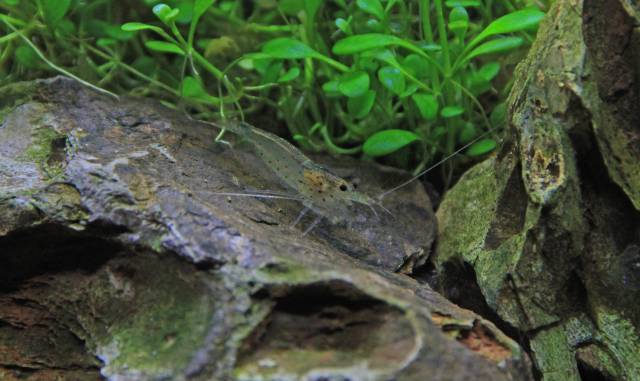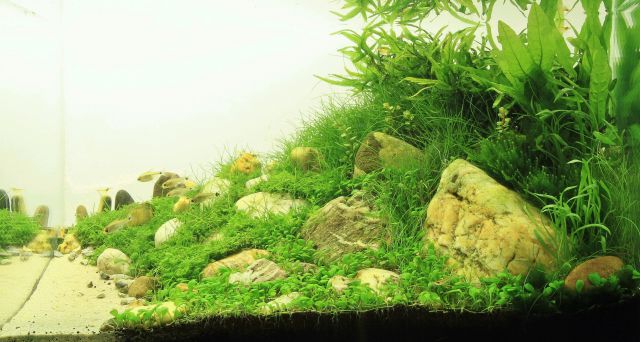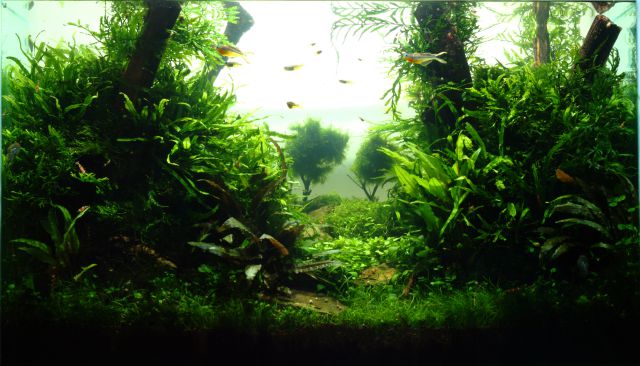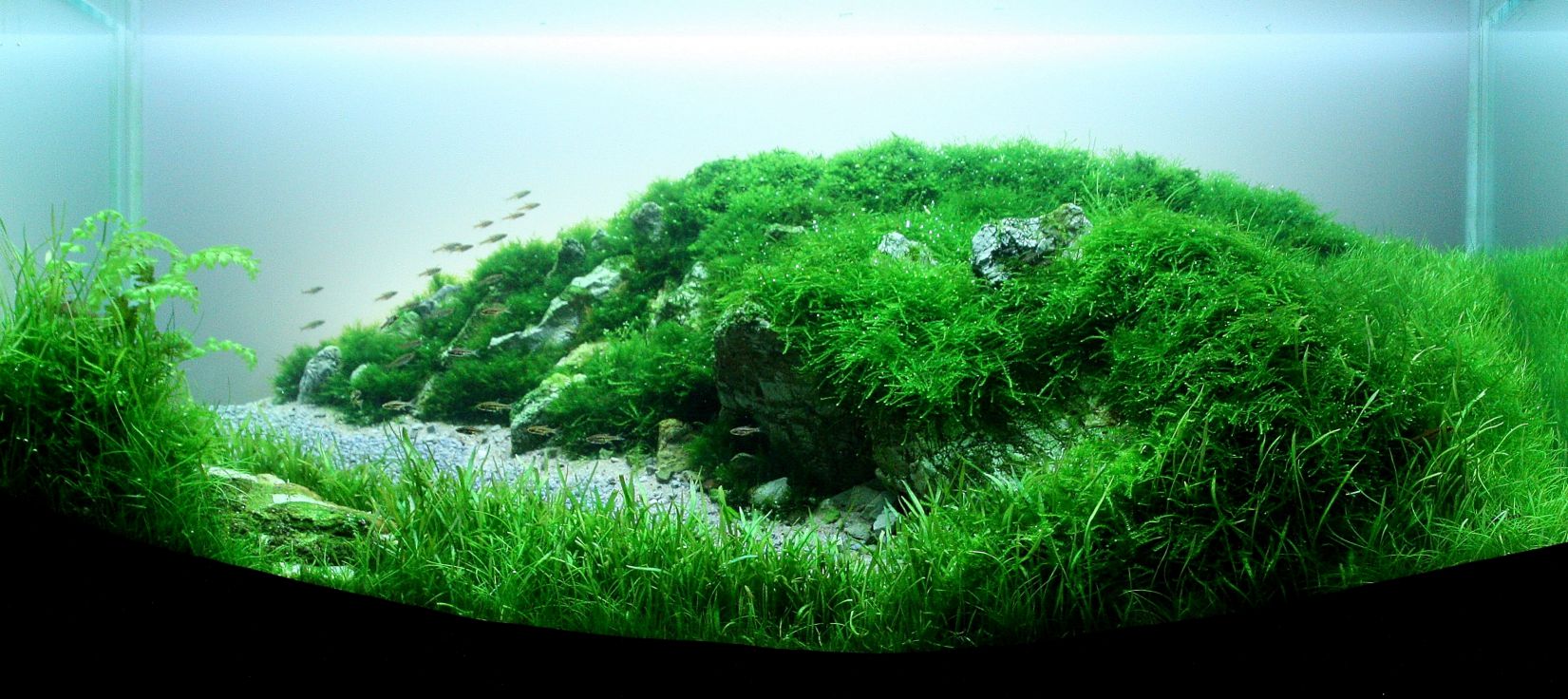Due to the many different types of fish available in commercial trade, it can be hard choosing the perfect inhabitants for your aquascape. In the following we will give you a couple of hints, hopefully making the choice a little easier for you.
General issues
In contrast to a community aquarium, the fish stock of an aquascape is usually not comprised of many different fish species. For reasons of tranquility and harmony usually just one bigger swarm of one specific fish species is chosen. In that respect, such a tank can almost be considered a single species aquarium. For the animals, this means increased well-being, as they can stay among themselves and have enough space in the aquarium. Often, some algivorous invertebrates such as shrimp and snails complete the overall picture.

Water values
Naturally the water values should be appropriate for the aquarium inhabitants concerning temperature, pH-value and hardness. Since many aquatic plants prefer acidic and soft water as well and many to most aquascapes are set up with active substrate - (soil), typical soft water fish like most tetras or danionin are well-suited. For harder, alkaline water, however, live-bearing toothcarp are more suitable.
Colours
There is an enormous variety of colors among the available aquarium fish. To make sure that the fish stocking also matches in color to an aquascape, there are two common selection methods:
Harmony
An especially tranquil and harmonious impression is created, when the colour of the animals is also represented in distinctive decorative elements of the aquascape. Silvery fish, for example, fit well in an Iwagumi with many gray stones. Dragon stone harmonizes well with yellow-hued fish. Where red plants are used, reddish fish support the harmonic impression.

The silvery fish form an optical unit with the bright stones.

The yellow-brown coloring of the fish is mirrored in the stones and sand in the foreground.
Contrast
Another approach is to create a visual contrast to the plants through the fish. For this you select animals in a color that does not or only hardly occurs in the aquarium layout. Red fish in front of many green aquatic plants have a special radiance.

The colourful Pseudomugil furcatus form a beautiful contrast in front of this green wall of plants.
Format
From a purely optical point of view, high-backed fish species are more suitable for higher aquariums. Slender fish, however, look better in an elongated panoramic aquarium. Thus, both the aquarium format and the body shape of the fish give a harmonious overall picture.
Size
To support the landscape approach of an aquascape it is best to choose small fish. Often those animals are sold as “nano fish” in commercial trade. Usually they are tetras or danionis with an expected size of three to four centimeters. A beautiful school of these is ideal for aquariums with edge lengths of 60 to 100 cm. Thus, the landscape-to-fish size ratio in an aquascape is not adversely affected.

A flock of small Boraras in an aquarium with 80 cm edge length.
Layout forms
The type of aquarium layout calls for a certain type of fish as well, for example in regard to its swimming behaviour. In puristic iwagumis, fish with a pronounced swarm behaviour work especially well. In jungle-like aquascapes with many roots and high-growing aquatic-plants lively and bustling animals support the wild impression of a nature aquarium.
Still can’t decide for a fish?
Then we recommend the Flowgrow fish databank. Here you can filter the animals by certain criteria like tank size, length of the fish and their optical impression.